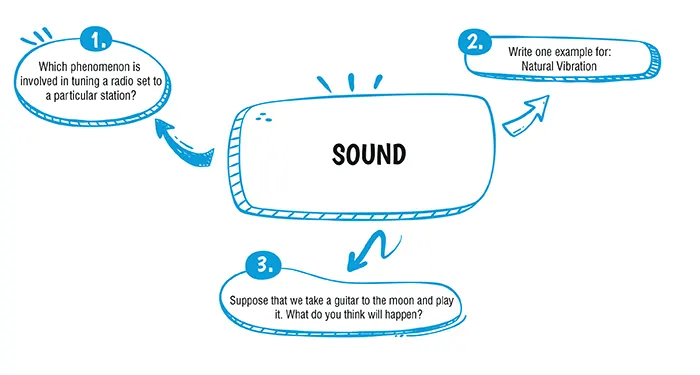Table of Contents

Ans. (c) The frequency of vibrations is less than the natural frequency
Explanation:
Damped vibrations refer to oscillations or vibrations that decrease in amplitude over time due to the presence of a resistive force, such as friction or drag. The resistive force acts against the motion of the vibrating system and causes the energy of the system to be gradually dissipated as heat or other forms of energy, leading to a reduction in amplitude.
Ans. (b) upto 120 dB
Explanation:
The safe limit of sound level for human ears is typically considered to be 85 decibels (dB) for an exposure of 8 hours per day. Prolonged exposure to sounds at or above this level can lead to noise-induced hearing loss. It's important to note that as the sound level increases, the safe exposure time decreases. For example:
Explanation:
Various frequencies from many radio stations are impinging on the antenna of the radio set at the same time. To tune exactly a radio receiver, we just adjust the settings indicated on the electrical components in the manner that vibrations of the exact same frequency of the radio waves we wish to receive are generally produced. When both the frequencies match because of resonance, the energy of the signal at that frequency is received from the incoming waves. Thus, resonance is the main phenomenon, which is involved in tuning a radio set to a particular station.
Explanation:
Examples are as follows:
Explanation:
There is vacuum on the moon.There is no force acting on the string which will resist its motion.If we displace the string once,it will vibrate for infinitely because of restoring force.This type of vibration shown by the string is called natural or free vibration.
Download Mind Map of this chapter
Download NowWant to Practice Mock Tests of this chapter
Practice NowDownload Important Questions of this chapter
Download Now| Chapter No. | Chapter Name |
|---|---|
| Chapter 1 | Force Work Power and Energy |
| Chapter 2 | Simple Machines |
| Chapter 3 | Refraction of Light |
| Chapter 4 | Refraction Through Lenses |
| Chapter 5 | Spectrum |
| Chapter 6 | Sound |
| Chapter 7 | Electricity |
| Chapter 8 | Electrical Power and Household Circuits |
| Chapter 11 | Magnetic Effect of Current |
| Chapter 12 | Specific Heat Capacity and Latent Heat |
| Chapter 13 | Radioactivity and Nuclear Energy |
| Chapter Wise Important Questions for ICSE Board Class 10 Physics |
|---|
| Force Work Power and Energy |
| Simple Machines |
| Refraction of Light |
| Refraction Through Lenses |
| Spectrum |
| Sound |
| Electricity |
| Electrical Power and Household Circuits |
| Magnetic Effect of Current |
| Specific Heat Capacity and Latent Heat |
| Radioactivity and Nuclear Energy |
CBSE Important Questions Class 10
ICSE Important Questions Class 10
CBSE Important Questions Class 10
ICSE Important Questions Class 10